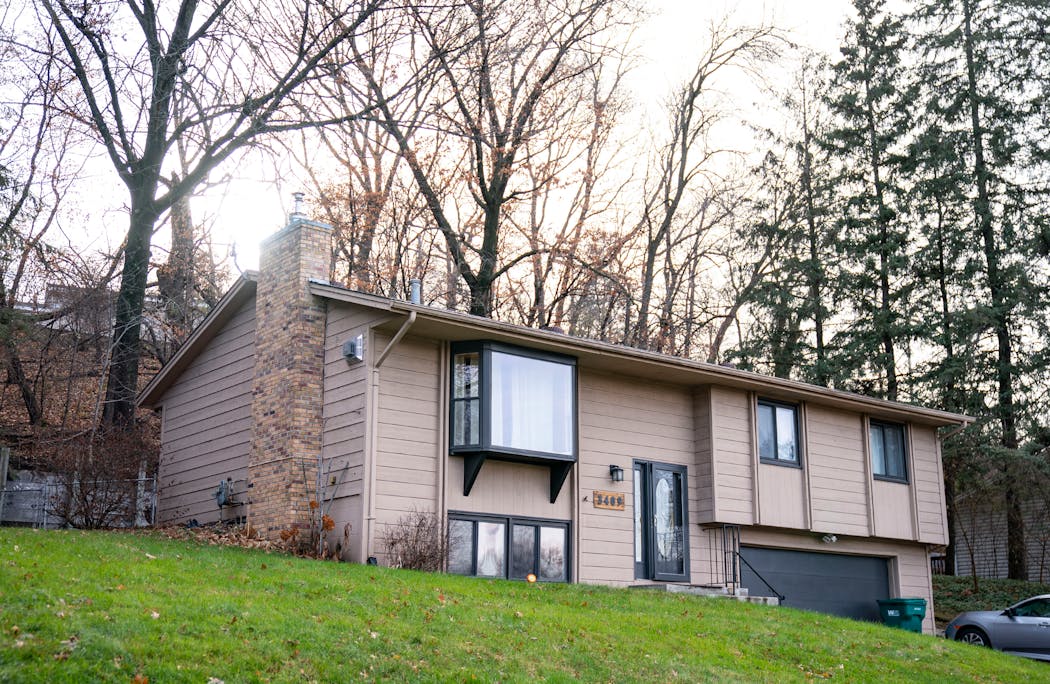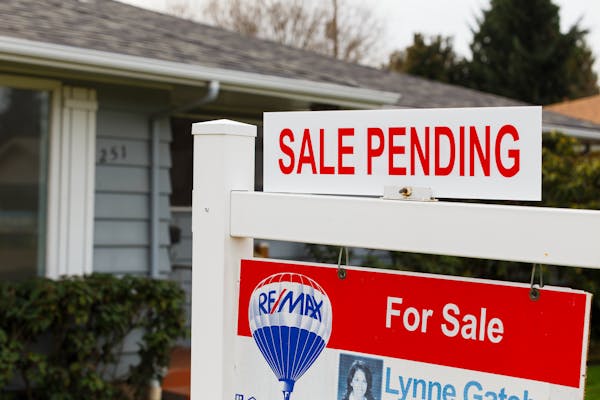Twin Cities residential real estate has been slowly reshaped over the past few years by national buyers who turn single-family houses into rentals, but the numbers appeared small against the overall market, and the effects marginal.
Now, data show that some neighborhoods in Minneapolis and the entire suburbs of Fridley and Hopkins are being transformed by corporate ownership, a phenomenon that shows no signs of letting up.
And the effects — including higher prices throughout the market, greater competition at time of sale, and out-of-state landlords showing less care for properties and renters — are becoming harder to ignore. On top of all that: fewer opportunities for people trying to get their first house.
"It's an unfair market for the first-time home buyer," said Henry Rucker, a broker with Twin Cites-based Banneker Realty. "We're not paying attention to who the buyers are. We're only looking at how much the seller will net."
Investor-owners, defined as those with two more properties they don't live in, now own about 4% of the single-family houses across the metro, twice the share since 2006, according to a new database developed by the Federal Reserve Bank of Minneapolis.
And in a half dozen neighborhoods and suburbs, they own more than 20% of the single-family houses.
Turning houses into rentals boosts the housing options for people who don't want to buy a house or rent an apartment. But it also makes it more difficult for people to build wealth through homeownership, especially in areas that are affordable to working-class buyers.
"Investors who are able to make cash offers are quickly limiting options for families that want to buy single-family homes, making it harder to get into homeownership," said Libby Starling, director of community development and engagement at the Minneapolis Fed.
She is especially concerned about the potential impact on minority households. The research shows that many of these rentals are concentrated in areas where the poverty rate is above average.
This summer, an analysis by the Urban Institute found that the Twin Cities already has the largest Black-white homeownership gap in the country. It found that while the white homeownership rate in the Twin Cities remained relatively stable between 2000 and 2018 at about 70%, the Black homeownership rate fell from 31% to 21% in 2018.
The Minneapolis Fed's new interactive database tracks entities that own two or more properties, not including apartments and duplexes that have always been intended for rental purposes. It shows that, while the practice is most prevalent in Minneapolis and St. Paul, investors are also making big bets on the suburbs.
In a part of Minneapolis northeast of downtown, investors now own more than 30% of the single-family houses. And in Fridley and Hopkins, more than 25% of the single-family houses are owned by an investor who doesn't live there.
Out-of-state owners pose a concern for state Sen. Kari Dziedzic, who has been working with Sen. Rich Draheim to make sure there are no unintended consequences of the trend.
She's troubled by the prospect that out-of-state investors are paying top dollar for properties, boosting prices at a time when housing affordability is already waning.
"Not only is it tying up available inventory in that neighborhood, it's also skewing the housing market in that neighborhood," she said.
The popularity of single-family rentals is a reflection of recent shifts in rental trends driven in part by the pandemic. Over the last decade, demand for compact rentals soared as baby boomers downsized and young millennials moved out of their parents' homes.
The view at the time was that younger renters were more social than previous generations, were getting married and having children later and didn't need space to entertain at home. So developers built studio and one-bedroom apartments.
COVID-19 upended those expectations. Suddenly, with more people working and studying from home, there was more demand for larger rentals.
Although many developers are building single-family houses in the Twin Cities metro area, investors are looking for other ways to meet demand. And that's attracting national home-owning firms, such as Invitation Homes and Home Partners of America, each of which now own more than 800 homes in the metro, according to the Fed.
Their rise comes at a time when competition for the least expensive houses in the Twin Cities has never been more fierce. This year, only about a quarter of the houses for sale in the metro area were priced at $250,000 or less, compared with about 50% five years ago, according to the Minneapolis Area Association of Realtors, or MAR.
On average, houses priced from $250,000 to $350,000 sold in just 22 days last month, the lowest of any price range and 40% faster than last year.
For more than a decade, home builders haven't kept pace with demand in the Twin Cities area, especially houses that are affordable to moderate-income buyers, creating a deficit of new homes that will take years to replenish.
The MAR now considers an affordable home price to be around $325,000, based on a household spending no more than 30% of pre-tax income on housing given current median incomes, home prices and interest rates. Today, most houses in the Twin Cities area cost far more than that.
In just the past decade, the median price of a house in the Twin Cities has more than doubled to $340,000, eroding housing affordability for home buyers such as LaTrelle Lloyd, who spent this summer shopping for a house and repeatedly getting outbid.
With a $250,000 budget, Lloyd knew he'd be competing against hordes of other first-time buyers and was prepared for battle. What he didn't anticipate was that he'd be bidding against investors with deeper pockets than his.
He bid on nearly a dozen houses but got outbid nearly every time, even though he almost always offered the sellers more than they were asking. He speculates that about half of the winning bidders paid cash and were able to waive all the normal inspection and appraisal contingencies.
"It was hard to find a house," he said. "Let alone compete with a bunch of people who could easily outbid what I could bid."
So far this year more than 12% of all closed sales in the Twin Cities metro area were cash deals, up from 10% the year before, according to the Regional Multiple Listing Service.
Lloyd and his fiancé were finally able to buy a house in early October. Though it's a fixer-upper, he feels lucky that they got the house for $3,000 less than the seller was asking. And he's grateful to finally start building equity.
"The home buying process was rough," he said. "And the house has some issues, but we'll end up expanding it because we want to start a family. It's a decent home and in a nice area of Minneapolis. It's a good first home, and it was within our price range."
As investment firms targeting communities with high-demand school districts — because the rents tend to be higher and tenants tend to stay longer — families that want to live in those areas now have fewer options, said Julie Gugin, executive director of the Minnesota Homeownership Center.
The firms tack up ads on phone poles and street signs offering a quick cash sale. Gugin said they are aiming to reach people who experienced financial hardship during the pandemic.
"You see the signs all over," Gugin said. "In my world, that's a predatory tactic; they're reaching out to consumers who might have been impacted by COVID-19 and feel like they don't have any other options."
Gugin said the Homeownership Center and other nonprofits are broadening their efforts to provide more down-payment assistance and counseling to help buyers compete.
On top of the proliferation of national home-owning firms that turn single-family houses into rentals, buyers are also competing with investors who buy houses to offer as short-term rentals, such as through Airbnb and other vacation rental websites.
"The market is already not affordable to a large segment of the population," said Andrea Ferstan, vice president of systems innovation at Twin Cities-based Center for Economic Inclusion. "And it stands to really worsen at a time when the market for single-family houses is becoming less affordable and more competitive."



